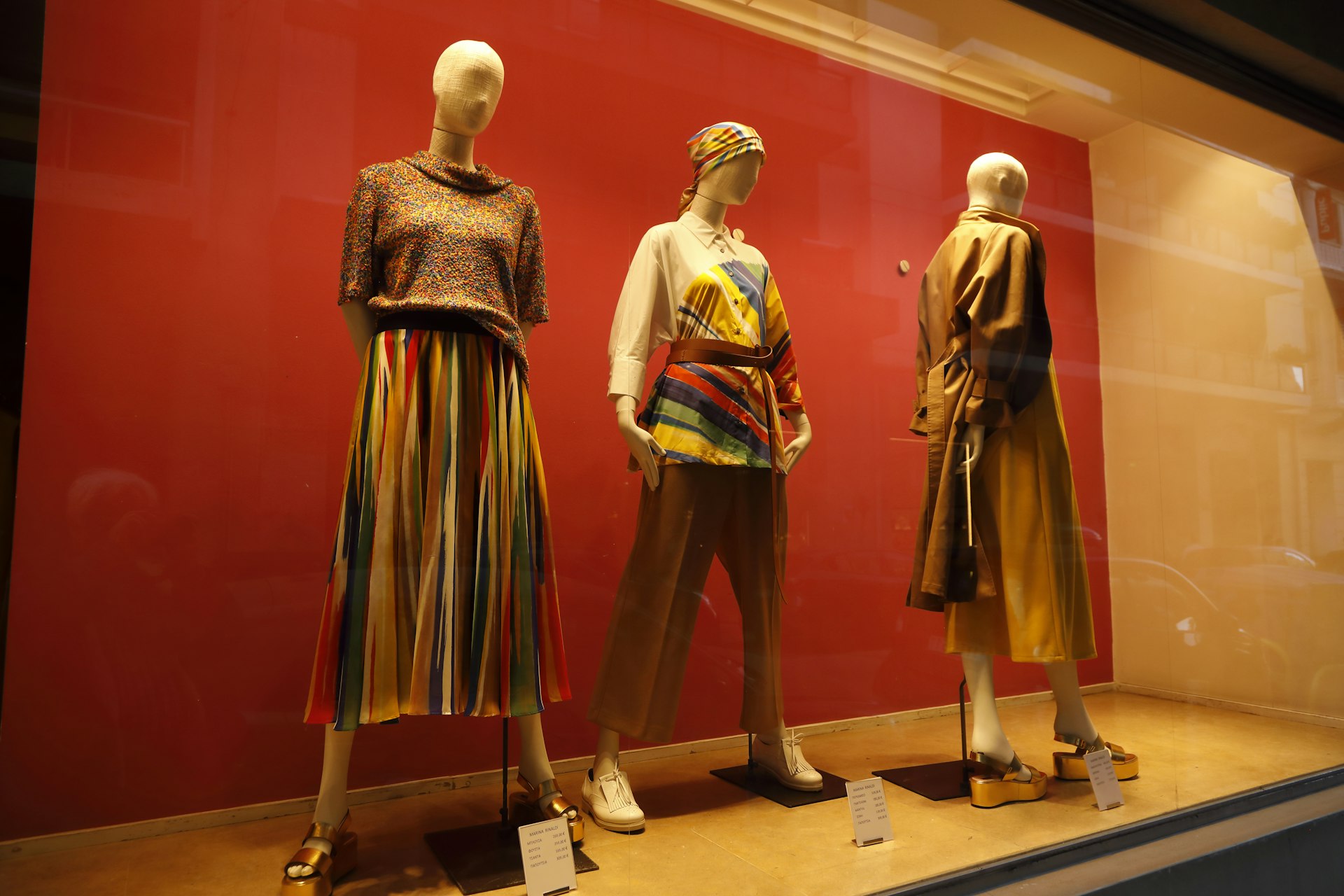How 3D Printing Is Advancing Sustainable Fashion: Innovation, Practice, and Future Pathways

Photo by J Williams on Unsplash
Introduction: Rethinking Fashion Through Technology
The fashion industry has long faced criticism for its environmental impact, from excessive textile waste to high carbon emissions and unsustainable production cycles. As global demand for fast, affordable clothing rises, these issues have only intensified. However, 3D printing technology is emerging as a game-changer, offering tangible solutions for making fashion more sustainable, efficient, and customizable [2] . This article explores how 3D printing is revolutionizing sustainable fashion, provides actionable guidance for brands and consumers, and highlights real-world examples and practical steps for engaging with this innovative movement.
The Sustainability Promise of 3D Printing in Fashion
One of the most significant benefits of 3D printing in fashion is its ability to
reduce material waste
. Traditional manufacturing methods often involve cutting patterns from large sheets of fabric, resulting in leftover scraps that frequently end up in landfills. In contrast, 3D printing is an
additive
process, only using the exact amount of material required for each item. This leads to a dramatic decrease in waste throughout the production process
[1]
,
[3]
.
Additionally, 3D printing enables local manufacturing , which can significantly reduce transportation emissions. By producing garments closer to the end consumer, brands can cut back on the environmental costs associated with global shipping and long supply chains [1] .
Research is also advancing the use of recycled and biodegradable materials for 3D printing. For example, innovators are developing algae-based filaments and recycled plastics to create eco-friendly fashion items [3] . Some researchers are even experimenting with biomaterials grown by bacteria, offering new ways to make clothing without the need for traditional textiles or sewing [5] .
Customization, Innovation, and Circularity
Modern consumers increasingly seek personalized fashion that fits their bodies and styles. 3D printing addresses this demand by allowing designers to create garments tailored to exact measurements, reducing the chances of returns and unsold inventory [1] . This customization not only improves the customer experience but also contributes to sustainability by minimizing surplus production.
Another key aspect is circularity . By using recyclable materials, 3D-printed garments can be designed for easy disassembly and reuse, supporting a closed-loop system where end-of-life products are transformed into new items [2] . Visionaries like Julia Koerner foresee a future where even discarded clothing becomes feedstock for 3D printers, introducing a new level of resource efficiency.
Real-World Examples and Industry Innovations
Several industry pioneers are already demonstrating the power of 3D printing in sustainable fashion:
- Designer Danit Peleg, recognized by Forbes and the BBC, collaborates on wearable fabrics made from recyclable plastic filaments. Her projects highlight comfortable, on-demand fashion that is also environmentally conscious [4] .
- The “Fashion and Robotics” project, funded by the Austrian Science Fund, is developing 3D-printed trousers and shoes from non-fiber biomaterials grown by bacteria. This approach eliminates the need for cutting and sewing, further reducing waste [5] .
- Educational institutions are training the next generation of designers in digital manufacturing, including 3D printing and modeling, to accelerate adoption across the industry [2] .
Implementation: How Brands and Consumers Can Engage
If you are a fashion brand or designer interested in adopting 3D printing for sustainable fashion, there are actionable steps you can take:
- Assess Your Current Production : Consider where material waste occurs in your process. Identify pieces or collections suitable for 3D printing, such as accessories, footwear, or custom-fit garments.
- Research Materials and Technology : Explore available 3D printing materials, focusing on recyclable, biodegradable, or bio-based filaments. Stay informed about advances in algae-based or bacteria-grown options. For guidance, consult reputable technology publications and reach out to suppliers specializing in sustainable materials.
- Develop In-House or Partner with Specialists : Decide whether to build in-house 3D printing capabilities or collaborate with firms offering 3D printing services for fashion. Look for partners with proven expertise in sustainable production.
- Prototype and Test : Use 3D printing for rapid prototyping. This enables you to iterate designs quickly and efficiently before scaling up production. Test for quality, durability, and comfort to ensure consumer satisfaction.
- Educate Your Team and Customers : Incorporate training on digital design and additive manufacturing in your team’s development. Consider participating in programs at universities or fashion institutions that emphasize sustainable digital manufacturing [2] .
For consumers interested in sustainable, 3D-printed fashion, you can:
- Seek out brands that publicly commit to sustainability and transparent supply chains. Look for information on their use of 3D printing and recycled materials.
- Support designers and collections that offer custom-fit or on-demand products, reducing overproduction and waste.
- Stay informed about new releases and collaborations by following reputable technology and fashion news outlets. Many brands announce sustainable initiatives through their official websites and social media channels.
Challenges and Limitations
Despite its promise, 3D printing in fashion faces several challenges:
- Quality Control : Achieving consistent quality in 3D-printed garments can be difficult. Some designs may require hybrid approaches that combine traditional techniques with additive manufacturing [1] .
- Consumer Perception : Many consumers are still unfamiliar with 3D-printed fashion, leading to skepticism about comfort and durability. Brands can address this through educational campaigns and by offering trial experiences [1] .
- Scalability and Cost : While 3D printing is ideal for small batches and bespoke items, scaling up for mass production remains a technical and economic challenge. However, ongoing research is steadily improving efficiency and reducing costs [5] .
To address these challenges, brands and innovators are collaborating on industry standards, sharing best practices, and investing in research and development. Consumers can play a role by supporting early adopters and voicing their preferences for sustainable options.
Practical Steps for Accessing Sustainable 3D-Printed Fashion
To find and purchase sustainable 3D-printed fashion:

Photo by Victor Sutty on Unsplash
- Search for designers like Danit Peleg or technology-forward brands using terms such as “3D printed sustainable fashion” or “recyclable 3D printed clothing.” Visit their official websites or contact customer service for information on collections and purchasing options.
- Consult leading fashion technology news platforms for reviews and announcements of new product launches. Examples include established outlets like FashionUnited and 3DNatives, both of which regularly cover sustainability innovations.
- If you are a student or professional, consider enrolling in design programs at institutions known for integrating digital manufacturing and sustainability into their curriculum. Search for universities offering “fashion design with 3D printing” or “digital manufacturing for fashion.”
For those interested in joining industry networks or learning from others, seek out conferences, webinars, and exhibitions focused on sustainable fashion and digital manufacturing. Participation can connect you with experts, suppliers, and likeminded innovators.
Alternative Approaches and Future Outlook
While 3D printing holds immense promise, it is not the only pathway toward sustainable fashion. Other innovative methods include robotic repair of clothing, use of organic fabrics grown in laboratory conditions, and artificial intelligence to streamline inventory and reduce overproduction [5] . Combining several technologies can maximize environmental benefits and economic resilience.
Looking ahead, as more brands and consumers embrace sustainable practices, 3D printing is expected to play an increasingly central role in reimagining how we design, produce, and consume fashion. The ongoing evolution of materials, technology, and circular business models will drive the industry toward a future where style and sustainability go hand in hand.
References
- [1] Techpacker (2025). The Indefinite Guide To 3D Printing In Fashion.
- [2] FashionUnited (2024). The Future of Fashion Is Here: How 3D Printing Is Changing the Industry.
- [3] Tomorrow.Bio (2023). How 3D Printing is Revolutionizing the Fashion Industry.
- [4] Moon Creative Lab (2025). Sustainable Fashion with 3D-Printing Technology.
- [5] 3Dnatives (2024). Using 3D Printing in the Fight Against Fast Fashion.



